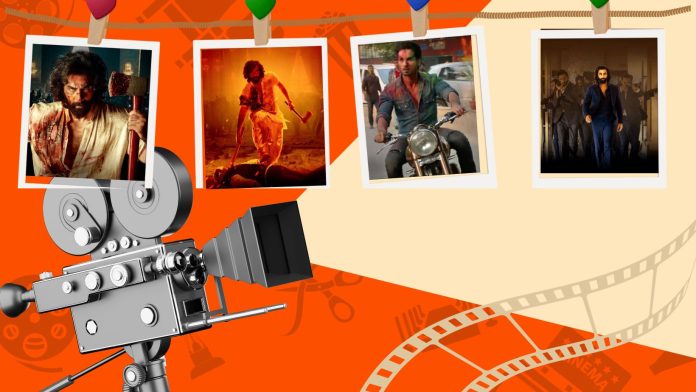We live in a country where most have access to entertainment. And when we talk about entertainment, Bollywood movies come into the picture. Hence it is very natural that exposure to Bollywood movies begins at a very early age. It’s sad to say but not all movies made in the country are the best teachers when it comes to love and relationships or even entertainment for that matter. And many times Bollywood film-makers have been seen glorifying toxic masculinity habits.
In the southern Indian film industries, a distinctive culture of actor worship has flourished, especially in Tamil and Telugu cinema. Charismatic actors like M.G. Ramachandran (MGR) and Nandamuri Taraka Rama Rao (NTR), Rajinikanth, etc became cultural icons. Their films in which they played mythological characters and real-world heroism, gave rise to a genre where actors were pursued like gods. The fans even build temples dedicated to these cinematic idols
This unique phenomenon extends beyond the screen which majorly also influences the politics in the region. MGR and NTR seamlessly transitioned from cinematic heroes to influential political figures, with MGR becoming the Chief Minister of Tamil Nadu and NTR serving in the same capacity in Andhra Pradesh. Iconic films like MGR’s “Malaikkallan” and NTR’s “Daana Veera Soora Karna” contribute to the larger-than-life persona of these actors, blurring the boundaries between fiction and reality in a captivating cinematic experience.
It is said that “Everything is fair in love and war”. But is EVERYTHING fair? The answer is no. Movies in Bollywood such as Kabir Singh, Badlapur, Gangs of Wassepur, etc with the latest being Animal, where the acting skills of Ranbir Kapoor were fabulous but is glorifying so much violence in the movie needed? Violence in any matter is a criminal offence and is nothing to be proud of.
Heroes or Actors in India have an immense rate of following, hence their actions in the movies can influence the behavioural patterns and perceptions very significantly in the youth at large. This hence raises the question of whether the film industry bears a social responsibility to refrain from showcasing toxic masculinity, knowing that it might be enacted in real life.
The Influence of Film Heroes:
Famous Bollywood stars and larger-than-life characters, play an important role in influencing the norms of society. Moviegoers often idolize their favourite actors, emulating their styles, dialogue delivery, and even, at times, their on-screen personas. This may further contribute to the normalization of harmful behaviours in real life extending to the portrayal of toxic masculinity.
The Power of Disclaimers:
Many argue that a disclaimer at the beginning of a film, cautioning viewers against imitating the actions depicted, is sufficient to absolve filmmakers of any responsibility. However, the effectiveness of such disclaimers is questionable, as viewers may dismiss them as routine legal formalities. If a film shows certain actions or behaviours, it’s got to be mindful of the fact that it could leave a lasting impression on the audience. It’s not just about what you see on the screen; it’s about how it resonates with you long after the credits roll.
The Role of Filmmakers:
While the filmmakers are free to explore various genres and characters, they must also be aware of the fact to what extent they can influence the youth through their choices of storytelling on the big screen. Glorifying toxic masculinity should not be encouraged rather it should be challenged so that it can contribute to a healthy society.
Encouraging Diversity in Narratives:
Masculinity is not in showcasing toxicity or violence. One of the ways to address the issue is by encouraging a diverse range of narratives that showcase different perspectives on masculinity. Challenging harmful stereotypes, characters which portray empathy, respect, generosity and more can contribute largely to understanding real masculinity.
Violence and Toxicity in movies may have some influence on real life, but it is not as influential as the violence people are exposed to every day. Violence in the media should be accounted for, but the hyper-fixation of violence in movies tends to overshadow the real-life violence people face daily. It is easy to fall prey to manipulative techniques or fail to consider how identity plays a role in violent situations if desensitization to violence occurs. Rather than being handled with care, urgency, and of the utmost importance, real-life violence is consumed in tandem with violence in entertainment. Violence, whether it is real or not, becomes a spectacle to inspire debate, to profit from, and ultimately to disregard more and more until it leaves the news cycle, treating documentation of crime as if it were contenders for box office hits.





























